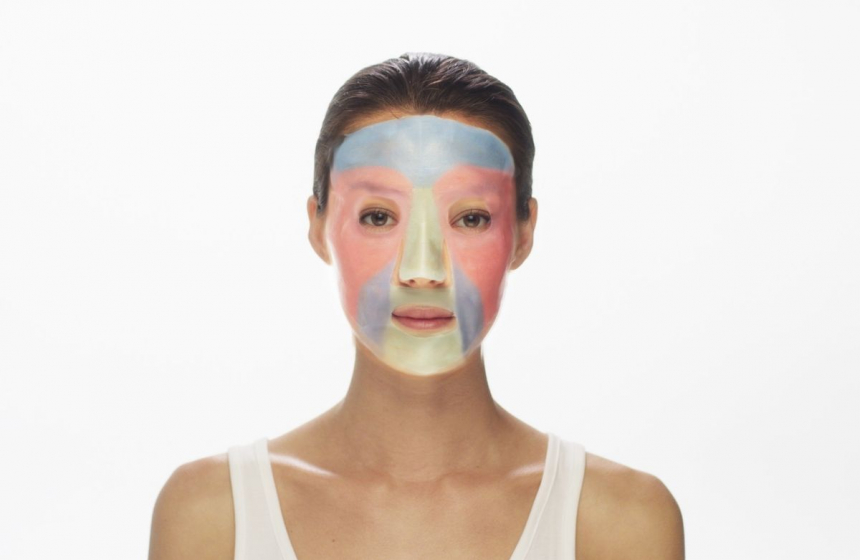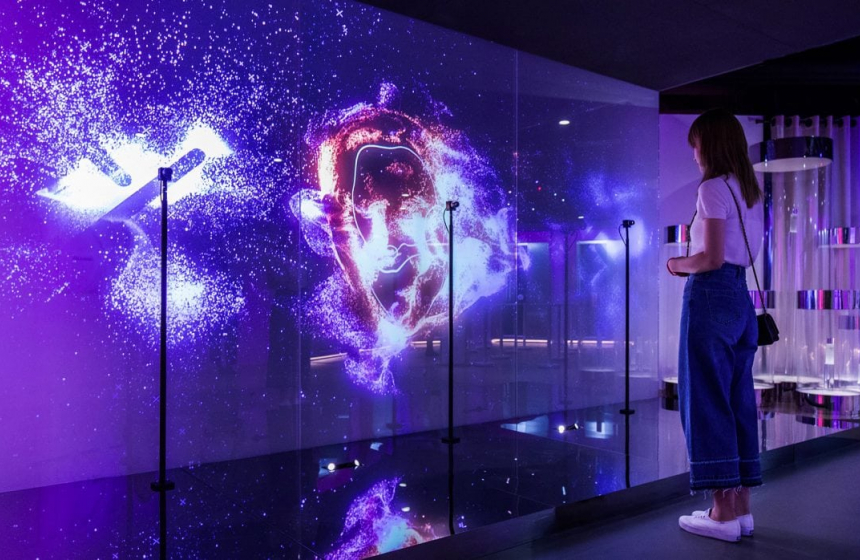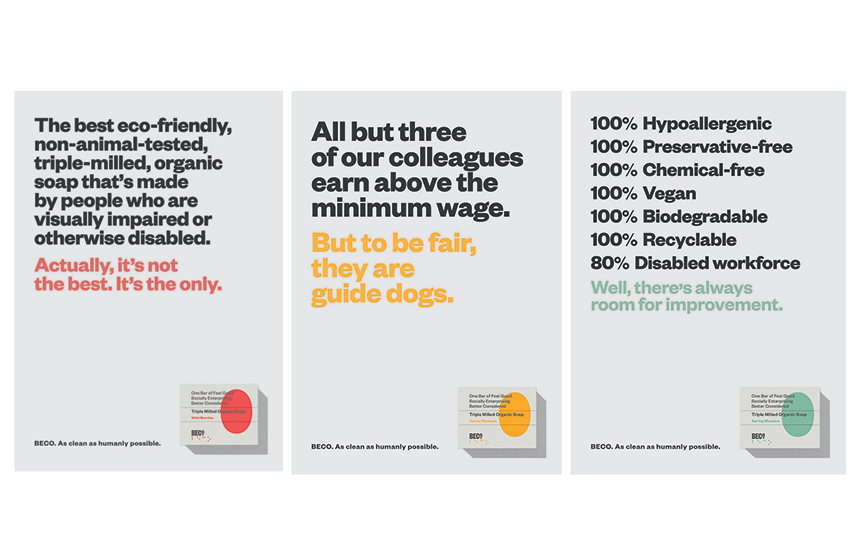
OceanSaver crabs promote plastic-free cleaning products
The campaign by Hearts and Minds, ‘The Ocean will Thank You’ focuses on positivity to encourage sustainable shopping habits

The definition and perception of beauty is changing, forcing the industry to change too. Here’s how some brands are keeping up.

We are image obsessed, now more so than ever. Which is why it isn’t surprising that the global beauty market was worth $465 billion in 2017 and is slated to grow to $750 billion by 2024, according to Inkwood Research. Beauty is big business, there’s no doubt about that. But the rhetoric around it is starting to change.
Social media has democratised the beauty space, allowing brands to be born around an organic community, digital-first names like Glossier, Milk Make-Up, Ouai haircare and others besides. These brands not only sound like the community that forms around them; they look like them too. The stereotypes are starting to dissolve as faces young, old, freckly, scarred, black or white smile up at us from our phone screens.
“Social beauty”, a term coined by Adrien Koskas, Managing Director of L’Oréal’s consumer products division in the UK, is what connects brands to the people passionate about their products. Consumers are looking for brands to align themselves with, to find those with a personality that speaks to their own.
And our behaviour online continues to shape the physical retail space. People browse, read reviews, watch videos online. But they still want to experience the product in store and for themselves. The move towards more experience based retail is allowing beauty brands to boom where other retail sectors are flailing.
In an article for British Vogue in October 2018, Nicky de Simone, Regional Brand Manager of Becca cosmetics in the UK and Ireland spoke of revolutionising the brand: “One of the big changes we discussed…was that the product becomes the souvenir of experience…It’s like taking a souvenir home from a holiday. This is a world that is about experience swag.”
Experience swag. This is a powerful phrase and one that encapsulates a new approach to retail, one that ensures that your brand becomes part of a lifestyle, rather than just a consumer-able experience.
The definition and perception of beauty is changing, forcing the industry to change too. Here’s how some brands are keeping up.

Neutrogena's Mask ID
It’s no wonder that with an ever growing beauty market, innovative technology will abound. Brands want to be first to market with the digital innovations that will further push the direct-to-consumer approach, allowing brands to collect and gather their own data and insights.
At this year’s CES tech festival in Las Vegas, a number of beauty conglomerates released their latest and greatest pieces of tech. Neutrogena launched a 3D-printed mask, the ‘Mask iD’. The mask’s shape is personalised by scanning the consumer’s face through the brand’s app, while also determining where the active ingredients should go. Olay also focused on the face in their first official appearance at CES with ‘Future You Simulation’, to show people what they could look like in the future, for example if they wore sun cream or not.
L’Oréal debuted a new product from La Roche-Posay at CES this year, a wearable sensor and app called ‘My Skin Track pH’. The device registers the pH levels of an individual’s skin using tiny particles of sweat, creating tailored routines from the results. The app then encourages continuous testing every four weeks to determine whether the new routine is working. Another detection piece of tech came in the form of P&G’s ‘Opté Precision Skincare System’. It is a wand which scans the face to detect colour, pigment and any blemishes after which it applies makeup using tiny inkjet nozzles.
The portrayal of gender in the media has led to deeply embedded notions of both masculinity and femininity, with seemingly no easy middle ground. But as the face of beauty changes, so too are the barriers to entry.
The more fluid gender identities of younger generations has led to an increase in the popularity of male make-up, where once it might not have gone mainstream. MMUK is an online male make-up brand which launched seven years ago. Its products are now sold on ASOS and across 15 territories. Towards the end of last year, luxury brands Chanel, Tom Ford and Marc Jacobs all launched cosmetic lines specifically for men. They also designed corresponding online tutorials to help their consumers.
But it’s one of the biggest male personal care brands in the world that has been attracting headlines in the last week. In a development from their original tagline, ‘The Best a Man Can Get’, Gillette released a 30th anniversary film entitled ‘We Believe’, created by Grey New York. The film addresses and challenges the traditional ‘boys will be boys’ gender stereotypes. Alongside the film, Gillette has pledged to donate $1 million a year for three years to “causes helping men become role models for the next generation”. Despite calls to boycott the brand’s products and an outcry from marketing’s favourite accidental PR engine Piers Morgan, it is fair to say that controversy equals conversation, even if in this case it has been polarising.

SK-II's Future X Smart Store
More health and beauty shops opened in 2016 in western Europe than any other type of retailer according to the real estate company CBRE. These shops are becoming “digital and physical playgrounds” as said by Katie Service, Editorial Beauty Director at Harrods.
Beauty stores are now a blend of two worlds, the ease of technology combined with the tangible experience of the product, as demonstrated by SK-II with their launch of the ‘Future X Smart Store’ at CES. The brand cites the concept as a ‘phy-gital’ retail environment, introducing systems such as an AI-powered interactive skincare wall.
The American skincare brand Drunk Elephant designed a similar environment for their UK launch in partnership with Space NK. With strategy delivered by comms agency Monty, The House of Drunk was a two-day immersive pop-up in London’s Covent Garden, allowing customers to test products, shop and experience the installations. For those who couldn’t make it to the store, the brand designed a 360-degree virtual experience with sneak peaks of products and exclusive content.
Towards the end of last year, France passed a law that said all brands have to say if their ads have been digitally altered, sending a message that there should be no one standard of beauty by which everyone is judged. This attitude was advocated by the cosmetics retailer Ulta Beauty in their latest campaign from McCann New York, ‘The Possibilities Are Beautiful’. The TV ad stars people of all ages, race, shapes and size, aiming to redefine the way beauty is portrayed.
Beauty cyberbullying is a serious problem all over the world. Rimmel London conducted research which revealed that 1 in 4 women have experienced this form of bullying and around 155 million images are deleted every year as a result. In a campaign from BETC London, ‘I Will Not Be Deleted’, the brand took a stand, capturing a message of empowerment for their audience. Working alongside UK-based charity Cybersmile, they are also launching an AI tool early this year to direct those seeking help to the best resources.
CVS, working with US creative agency Standard Black, has released their first, totally un-airbrushed ad. The 30-second spot, ‘Beauty In Real Life’, directed by Kat Keene, is stamped with the brand’s new CVS Beauty Mark, their promise that the image has not been altered in any way. CVS, which sells more than 500 beauty brands across its stores, is setting a standard with their marketing, reflecting the authenticity that their consumers are searching for.

BECO, 'As clean as humanly possible' by TBWA\London
Across each and every sector, consumers are demanding more transparency, and clearer purpose, from the brands they choose to buy from. This stretches across social, environmental and economical causes. But, especially in the past couple of years, the environment has taken centre stage for beauty brands, from packaging to messaging and product ingredients.
Last year as part of their ‘Clean Hair, Clean Beaches’ initiative, Head & Shoulders, working alongside Saatchi & Saatchi London, announced a partnership with Tesco to ensure that their packaging is made from up to 20% recycled beach plastic. Their bottles, minus the lids, are already 100% recyclable. This is an important move from such a popular, and widely accessible, brand as Head & Shoulders.
Although the focus for Veganuary is on consuming no animal-based products, the demand for vegan beauty doesn’t seem to be waning. Indeed, searches for vegan beauty have doubled on the Boots website in the last two years. Vegan beauty products are defined as those that haven’t been tested on animals and don’t contain any animal derivatives. A couple of examples are Jecca, which is a gender-free and vegan make-up brand that supports the LGBTQ+ community. And vegan brand Milk Makeup which arrives in the UK later this month, partnering with Glamour on the launch event.
Some brands are focusing both on their external offering and their internal workings when it comes to core purpose. A new social enterprise brand BECO creates environmentally friendly toiletries and also employs people who are mostly visually impaired, disabled and disadvantaged. In a campaign by TBWA\London, ‘As clean as humanly possible’, the print ads focus on the brand’s ‘green’ credentials in a tongue in cheek tone whilst also humorously conveying their hiring policy. The ad aims to focus on the portrayal of people with disabilities in a more honest way than the frequently over earnest commentary of ads past.
Looks like you need to create a Creativebrief account to perform this action.
Create account Sign inLooks like you need to create a Creativebrief account to perform this action.
Create account Sign in